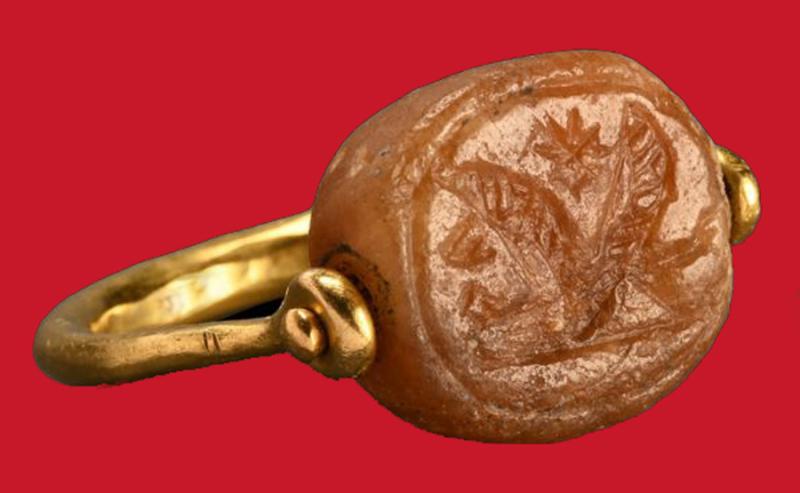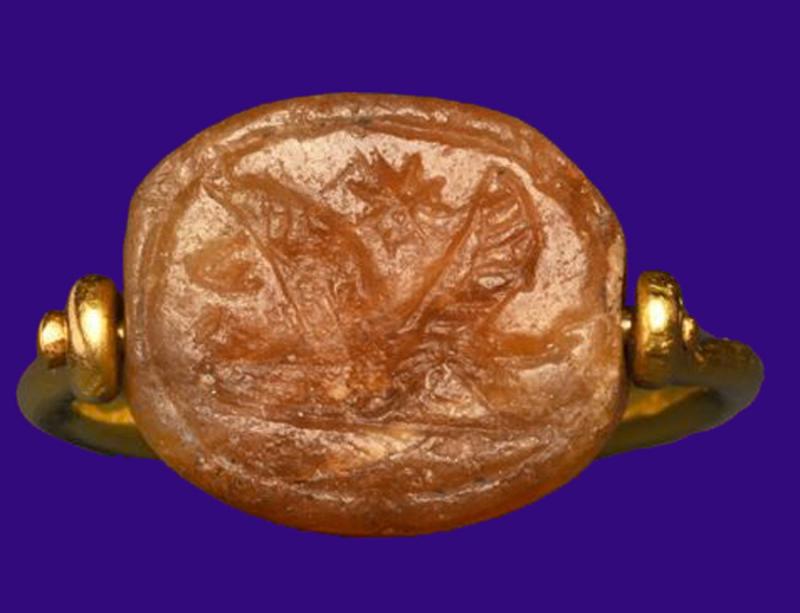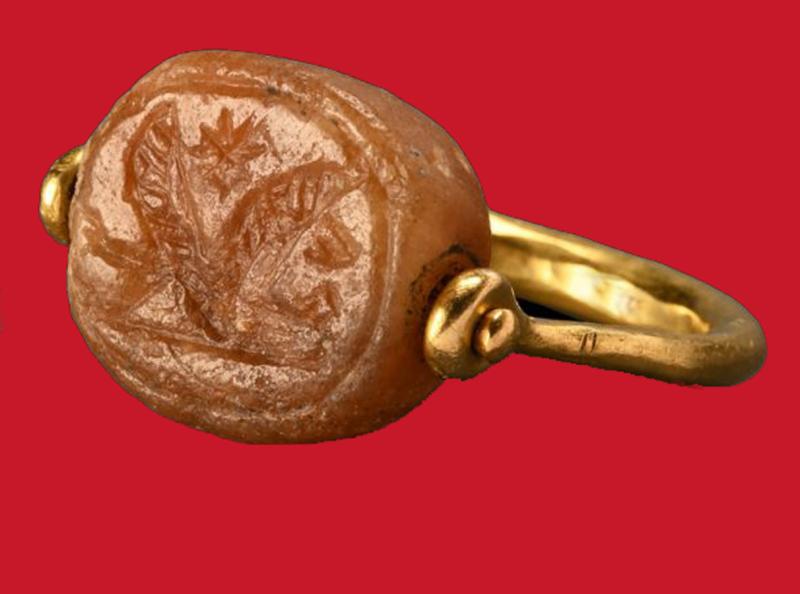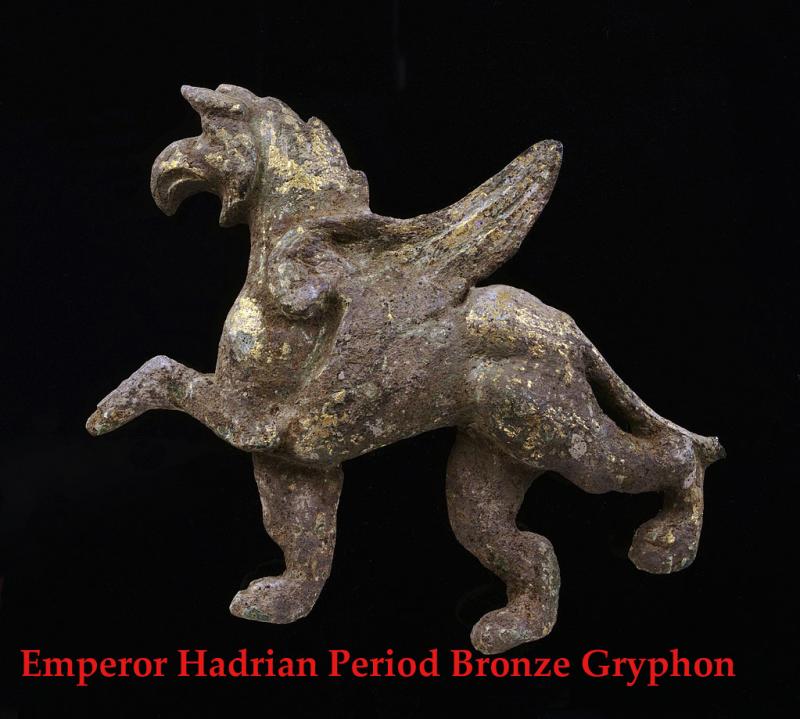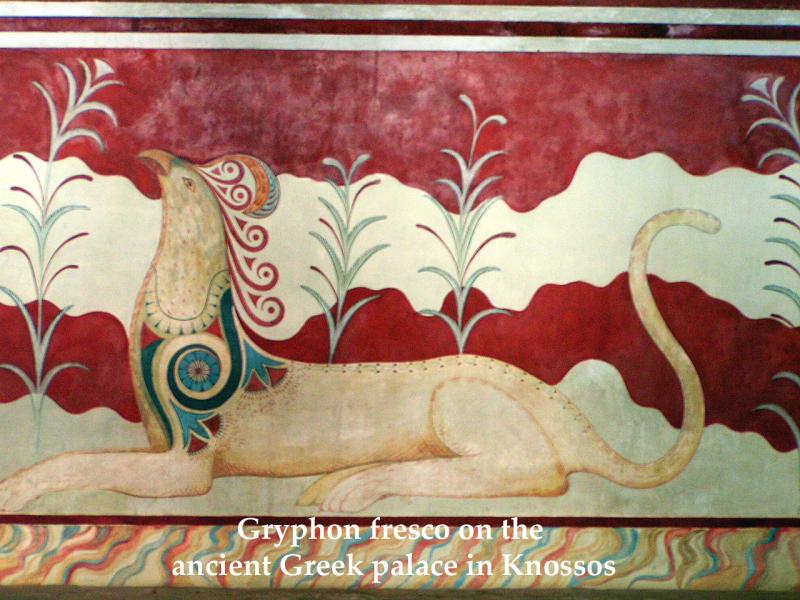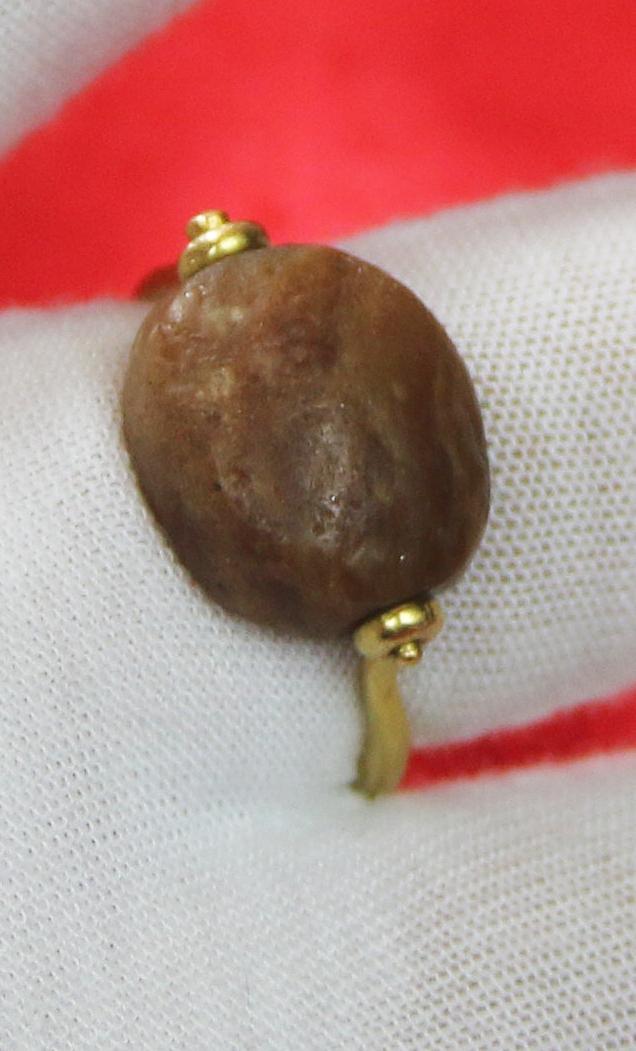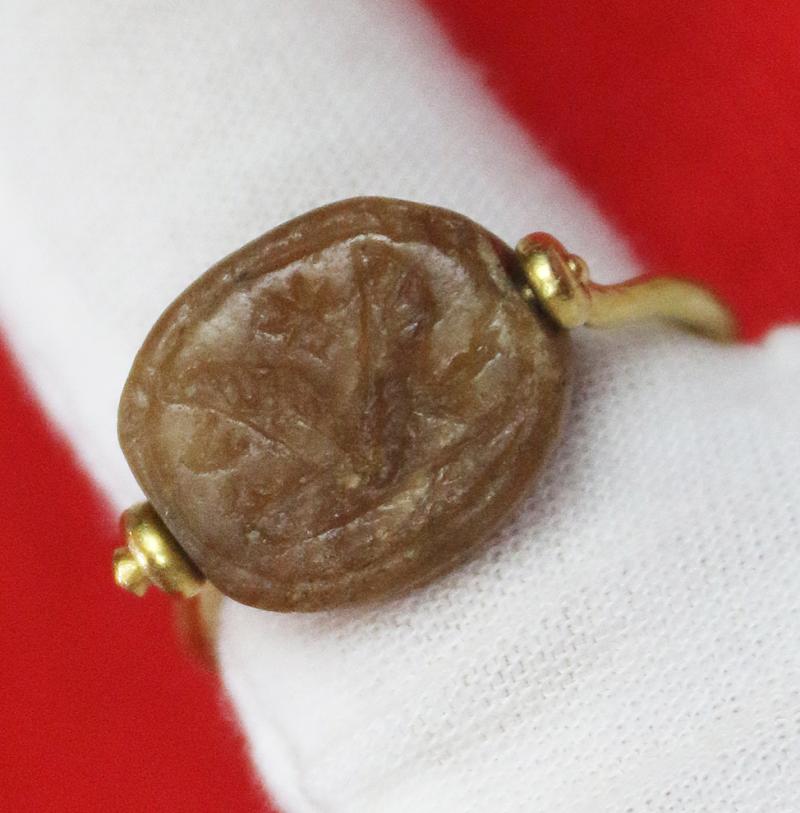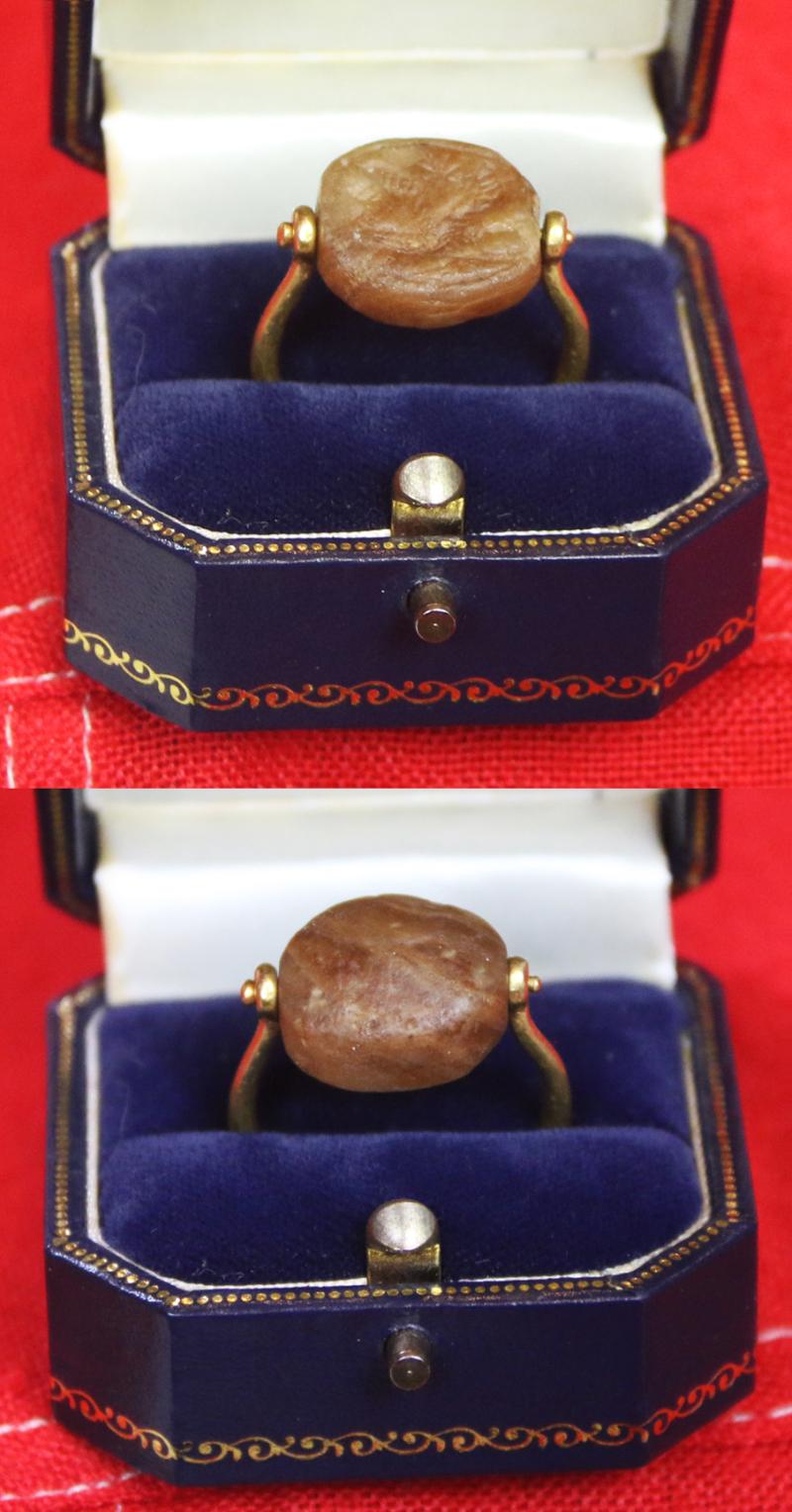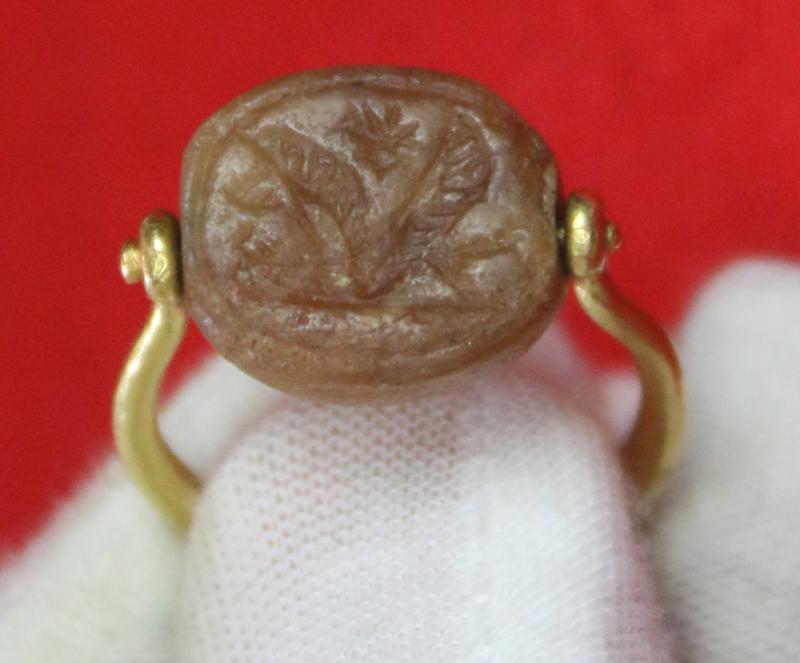A Stunning Carved Intaglio Stone Seal Ring, Ancient Greek Era, Depicting a Winged Gryphon, 2500 to 2700 Years Old With Rotating Gold Finger Ring Mount, In Rotating Scarab Form
A stunning example of original ancient Phoenician carved intaglio seal in scarab form artistry, made for the ancient Greek market around 2700 years ago.
Phoenician artists carved seals, especially scarab seals created from semi-precious stones where the base is incised with names and decorative devices. Not only used as seals they were also carried as amulets and worn as rings and pendants. Once again sphinxes, winged deities, and solar disks were created. Finally, jewellery was also produced, often in gold or glass, and finds include necklaces, bracelets, pectorals, pins, earrings, and medallions. Some of the gold examples have repoussé decoration. Agate, onyx, and crystal were also used to produce beads for jewellery whilst small circular glass plaques were pierced with holes so that they might be sewn onto clothing.
Phoenician art spread to its colonies throughout the Mediterranean from the 8th century BCE and none more so than at the most successful Phoenician off-shoot: Carthage. Artists there were strongly influenced by and perpetuated Phoenician styles and subject matter up to the 2nd century BCE. Meanwhile, with the rise of Greece from the 5th century BCE, Phoenician art in the homeland became increasingly Hellenized as it continued its eclectic path towards mixed forms, which led to such oddities as Egyptian anthropoid sarcophagi with very Greek-looking faces carved on their exteriors. Long famous as traders and sailors, the Phoenicians, then, are slowly, as more and more of their art is discovered and known pieces are correctly attributed, gaining wider recognition as having been capable of producing just as fine art pieces as their contemporaries in Egypt and Mesopotamia.
Because the lion was traditionally considered the king of the beasts, and the eagle the king of the birds, by the Middle Ages, the griffin was thought to be an especially powerful and majestic creature. Since classical antiquity, griffins were known for guarding treasures and priceless possessions.3
The griffin, griffon, or gryphon. In Greek and Roman texts, griffins and Arimaspians were associated with gold deposits of Central Asia. The earliest classical writings derive from Aristeas (7th cent. BC), preserved by Herodotus and Aeschylus (mid 5th century BC), but the physical descriptions are not very explicit. Thus even though they are sharp-beaked, their being likened to "unbarking hounds of Zeus" has led to the speculation they were seen as wingless.
Pliny the Elder (1st century) was the first to explicitly state that griffins were winged and long eared. But Apollonius of Tyana wrote that griffins did not have true bird wings, but only membranous webbed feet that only gave them capability of short-distanced flight. Writers after Aelian (3rd century AD) did not add new material to griffin lore, except for the later lore that griffins deposited agate stone among the eggs in their nest.
Pliny placed the griffins in Æthiopia, and Ctesias (5th century BC) in greater India. Scholars have observed that legends about the gold-digging ants of India may have contaminated griffin lore.
In the Christian era, Isidore of Seville (7th century AD) wrote that griffins were a great enemy of horses. This notion may have readily developed from the tradition that horseback-riding Arimaspians raided the griffin gold.
The stone is very good condition, as is the gold swivel rotating mount, which enables the carved intaglio to be either showing or hidden during wear, the gold ring mount was made from a later yet unknown period.
size, UK, 'U'
Code: 24918

